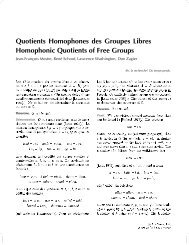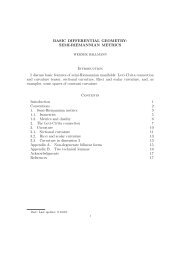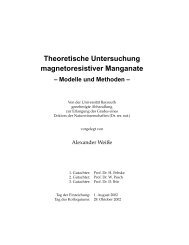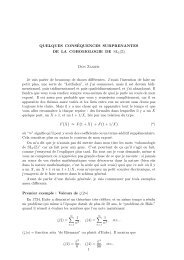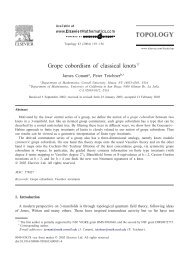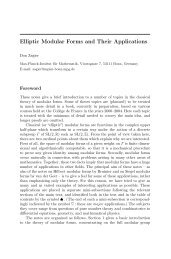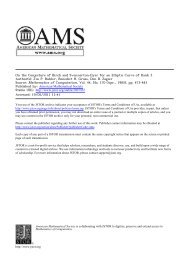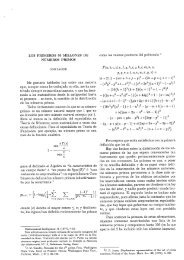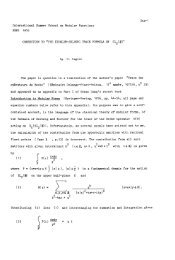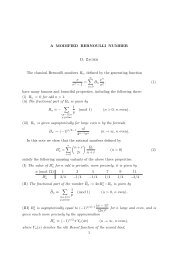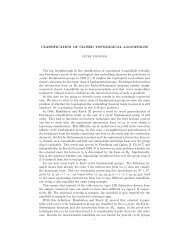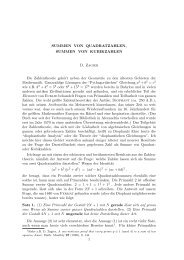THE GEOMETRY OF REFLECTION GROUPS Our first encounter ...
THE GEOMETRY OF REFLECTION GROUPS Our first encounter ...
THE GEOMETRY OF REFLECTION GROUPS Our first encounter ...
Create successful ePaper yourself
Turn your PDF publications into a flip-book with our unique Google optimized e-Paper software.
2 GEORDIE WILLIAMSONAn infinite beehive has infinitely many symmetries:· · · · · ·A fascinating area of current mathematical study is that of reflectiongroups. These are collections, or groups, of symmetries in which everysymmetry can be expressed as compositions of reflexive symmetries. Thesymmetry group of a butterfly is the set {id, s} where s is the reflexive symmetry.We write ss = s 2 = id to express the fact that if we perform s twicewe “do nothing”, referred to as the identity transformation in the theory ofgroups.The next simplest example of a reflection group is the symmetries of anequilateral triangle:The reflections in the marked axes of symmetries give three reflexive symmetries.The reader can check that performing two reflections in two differentaxes of symmetry yields a rotation. This gives a complete descriptionof the group of symmetries of the triangle: it has three reflexive symmetries,two rotational symmetries and the identity transformation.Similarly, the symmetries of a regular polygon with n facesn = 7yields a group with n reflections, n − 1 rotations and the identity transformation,giving a total of 2n symmetries. If n = 6 we recover the symmetriesof the snowflake!The notion of reflexive symmetry makes sense in any dimension. In onedimension the “axis of symmetry” is a point:•



